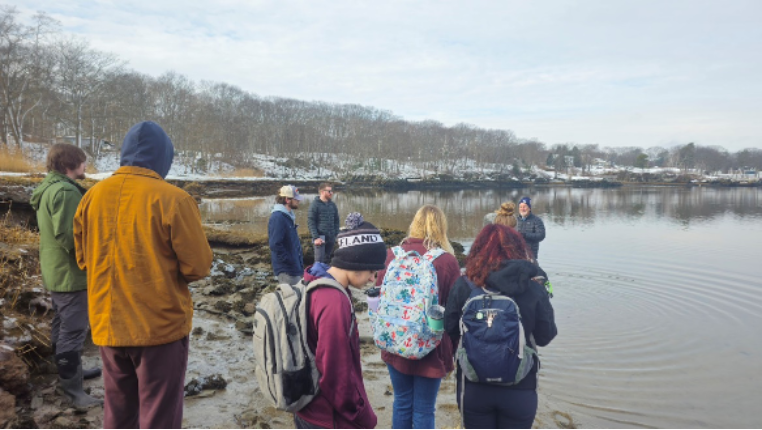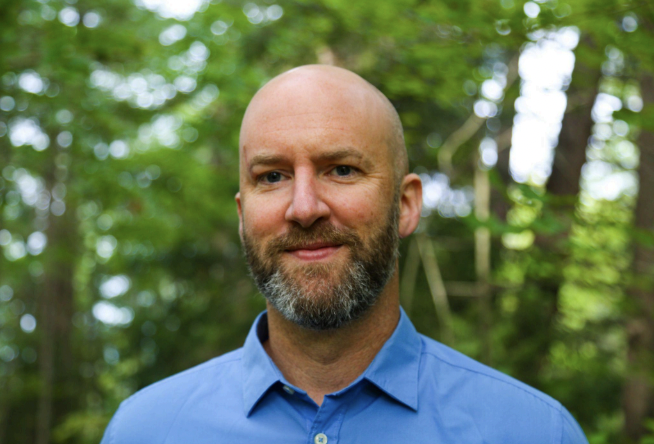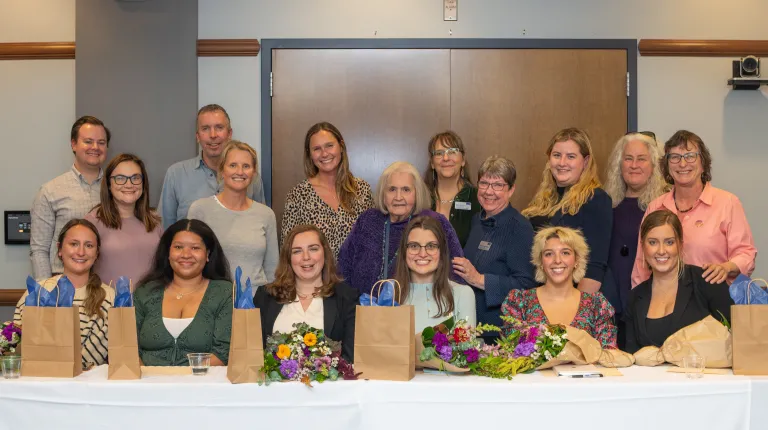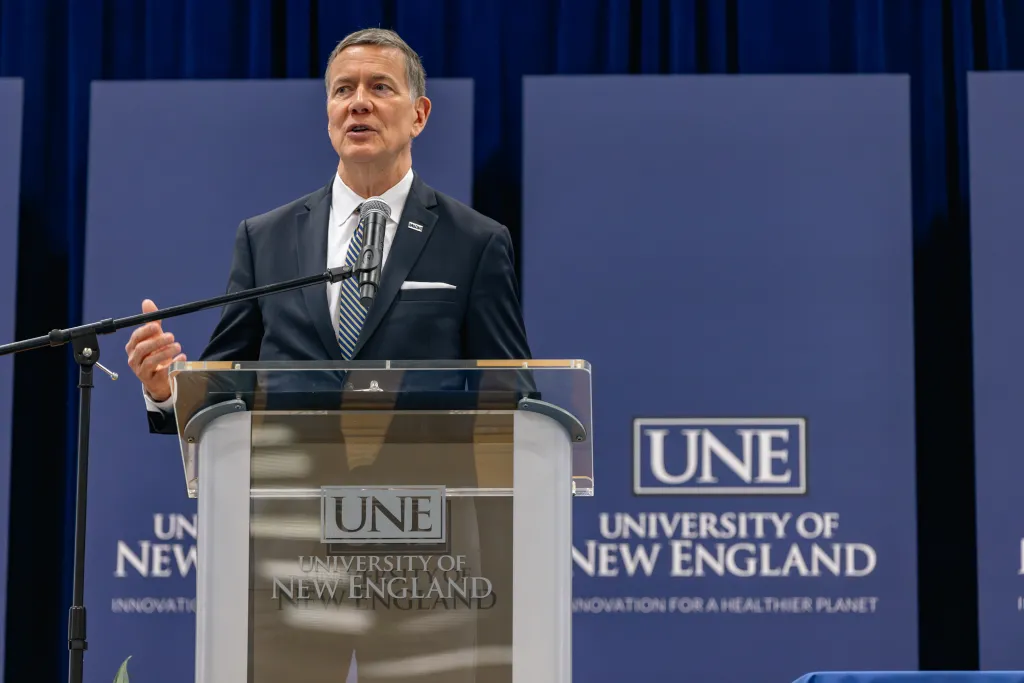Burdick, a Research Associate Professor of Coastal Ecology and Restoration in the Department of Natural Resources at UNH has studied coastal science for 35 years. He has successfully constructed living shorelines on the coasts of New Hampshire and Maine. And, most recently, he completed a project at Wagon Hill Farm in Durham, NH, that has geographical similarities to the UNE site.
The course, taught by Pamela Morgan, a Professor of Environmental Studies, as awarded a privately funded grant this past fall to restore UNE’s marsh, located in front of the Commons Lawn (Figure 1). Since 2020, students have collected data on the marsh’s declining health. They have noted a decrease in plant biodiversity and coverage, marsh elevation, and an increase in erosion.
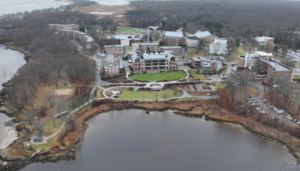
In four years, nearly the entire lower marsh has been lost to erosion. Without a lower marsh to buffer wave energy, the Commons Lawn is threatened by rising sea levels and the resulting increase in storm surges.
Students are working in groups of 3-4, with support from Morgan, engineers, and Alan Thibeault, vice president for University Operations, to design a living shoreline project that will reestablish a lower marsh, provide habitat for wildlife, and protect infrastructure, such as the sewage treatment center, and the beloved Jordan’s Point.
Unlike hardened structures such as seawalls and bulkheads that can harm coastal ecosystems, living shorelines replicate native marshes by using nature-based materials like rocks, plants, oyster shells, or coconut fiber logs, that provide habitat, reduce nutrient pollution, and protect the shoreline from waves. Students are tasked with deciding where on the marsh to focus their restoration efforts, and how they are going to manage the numerous factors that are affecting the marsh’s health.
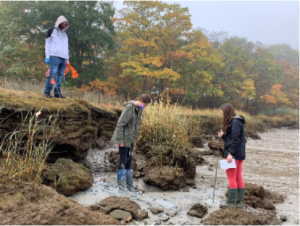
Students must create a design that will maintain the shoreline’s aesthetic and withstand wave energy from boats and storms. Their design must also address the invasive phragmites patch, the steep marsh edge (Figure 2), and the deep gullies created by water runoff from pre-existing drainage pipes. (Figure 3).
Additionally, students must plan for a marsh retreat. Through a process called vertical accretion, salt marshes can increase their elevation and move landward to adapt to sea level rise. Burdick pointed out that the walking path and trees along Jordan’s Point may interfere with the ability of the marsh to retreat. If these barriers are not removed, the marsh will not survive in the long term.
Burdick noted other stressors that may affect the long-term success of their project, including geese that are notorious for eating young marsh plants. He emphasized that deposition of wrack (seaweed, surfgrass, driftwood, and other organic material washed ashore) can impede plant growth if not removed timely. “Sometimes you can’t accomplish everything you want to,” Burdick reminded students. Plans often change due to factors outside of their control, and the team will have to adapt.
“Nothing is always, everything is dynamic. You will have to revisit and rework [the design].”
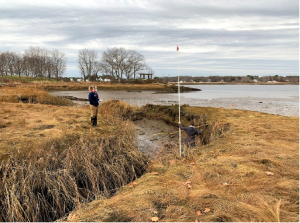
Despite the multitude of factors to consider in saving the marsh, students are hopeful that their combined efforts will be a success.
Senior Environmental Studies major, Emily Kalinoski, who has taken the course for two semesters, said, “what I envision for the future of this class is for it to be a successful example of what other communities can do.”
In the coming weeks, students will present their small group proposals, and together as a class decide on a final plan to submit to engineers. The project is expected to be undertaken next spring, and may take several months to complete.
In the meantime, students will continue to educate the public about living shorelines, collect data, and look excitedly to the future.
For more information on living shorelines, visit the National Oceanic and Atmospheric Administration (NOAA) Understanding Living Shorelines website.
To see examples of flourishing projects in the Northeast, checkout the NOAA Living Shoreline database.



